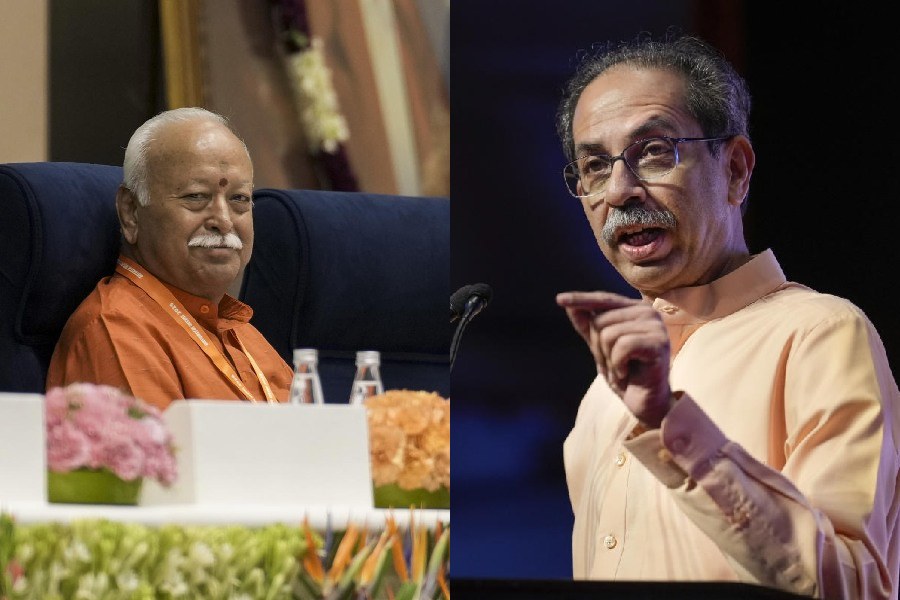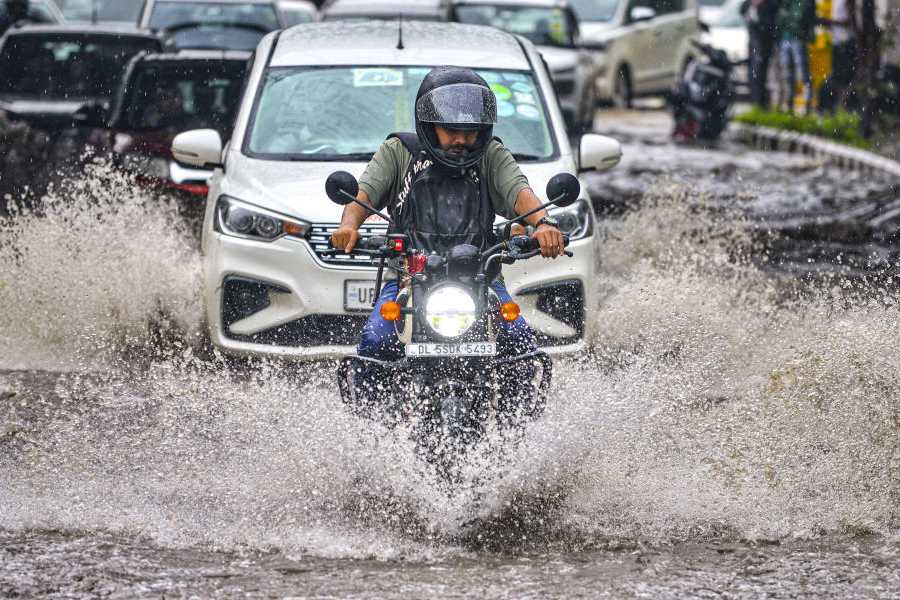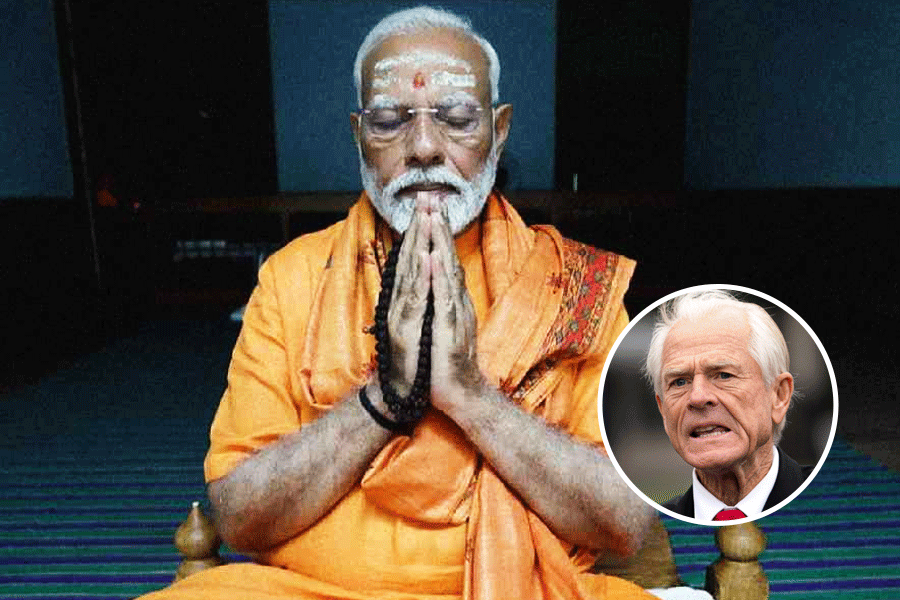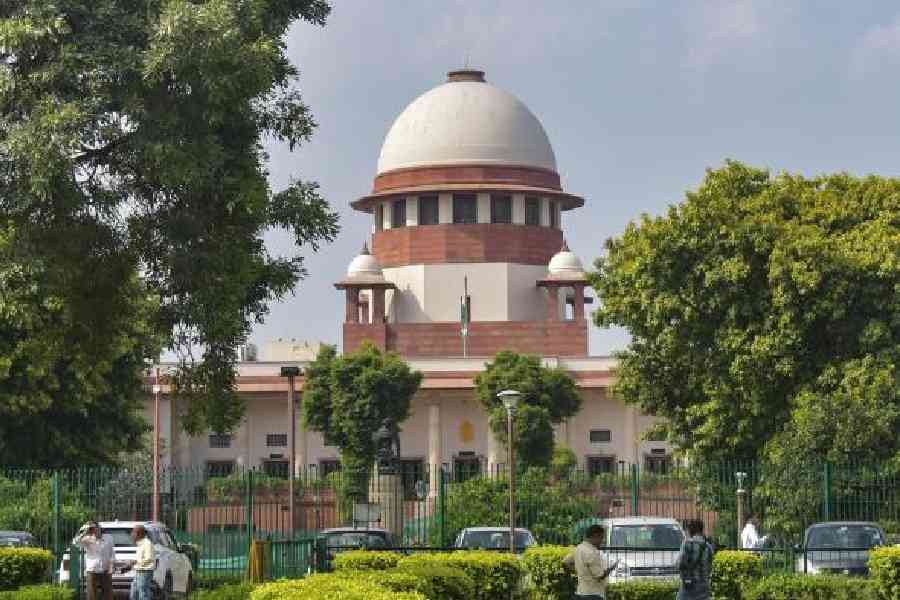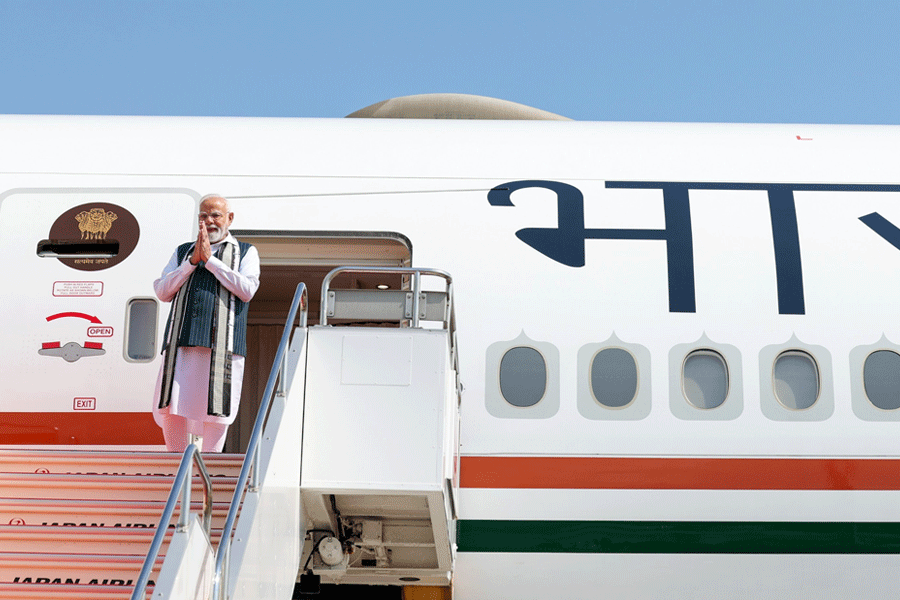
Jorhat, April 28: A flourishing kingdom on the Indo-China Silk Route; imposition of religious belief on a people by another more dominant group; a whiff of outside workmanship, telling of a king who had staked claim to this territory.
These and more ideas were put forth by researchers in the national symposium on history and archaeology of the Doyang-Dhansiri Valley organised at Jorhat College here yesterday to explain "a lost civilisation" which had left exquisitely carved relics and scientific designs and structures at the site.
Devabrata Sharma, principal of the college, had led an expedition of students into the Baksapahar area of the valley. They found relics buried deep in the jungles of Baksapahar, which piqued his interest. The symposium was only a natural outcome to go deeper into what was a highly developed civilisation which existed prior to the coming of Ahoms to Assam in the 13th century but of which little was known.
The team had done a GPS survey of 100 bighas of land in the Doyang-Dhansiri valley, about 60km from Jorhat and 240km from Guwahati in the present Golaghat and Karbi Anglong districts of Assam.
"The area which covers Deopahar, Baksapahar, Naksha Pahar, Kasomari, Nagajan Khanikor village of Sarupathar has many sites with historical evidences of a lost civilisation," Sharma said.
Hemendranath Dutta, eminent archaeologist and vice-chancellor of Nagaland Global Open University focussed on the history and archaeology of the Doyang-Dhansiri valley.
He said the Doyang-Dhansiri valley served as the trade link between Indian mainland and Southeast Asia since the second or third century AD.
He also presented a documentary on the excavations of the archaeological ruins led by him at Dubarani, Barpathar in the valley in which a clay seal inscribed in the Brahmi script had referred to a king Vasundhara Varman. Also, the site had yielded the imprint of two feet on terracotta which was most likely of a king who was worshipped. The plinth of a temple found in the area made of bricks was also in the Vastu Shastra mode, all speaking of a highly civilised people.
Dambarudhar Nath, professor holding Aniruddhadeva Chair at the department of history, Dibrugarh University, theorised on the basis of evidence that the religion in the "pre-Ahom age in Assam was Buddhism or Tantric which was essentially anti-Brahminical."
Arguing on the basis of Charyapada and Madhav Kandali's religious discourses, he said the revolutionary views of Buddha affected the religious beliefs of many tribes in pre-Ahom Assam and that the Shiva temple and other temples at Deopahar could be imposition of Hinduism on these people and later additions.
"Everything should be seen from the context of land and people who existed in a given period of history and this place was greatly influenced by Buddhism which may have wanted to be dominated by Hindu kings, probably from outside Assam or even later," he said.
Uttam Bathari, assistant director of ICHR (North Eastern Region) stressed the need to study history from the modern perspective. Referring to the migration of the Kacharis of Doyang-Dhansiri Valley to Dimapur, he questioned whether Doyang-Dhansiri civilisation was Aryan or Mongolian. He argued with evidence that "Pani Khetia" "Shali Kheti"(rice cultivations) was the contribution of the Tantric-Tibeto Burmans and not of the Indo-Aryans.
Raktimranjan Saikia, professor, JB College, made an analysis of history and archaeology of the ruins of Doyang-Dhansiri Valley from the scientific perspective of geology.





